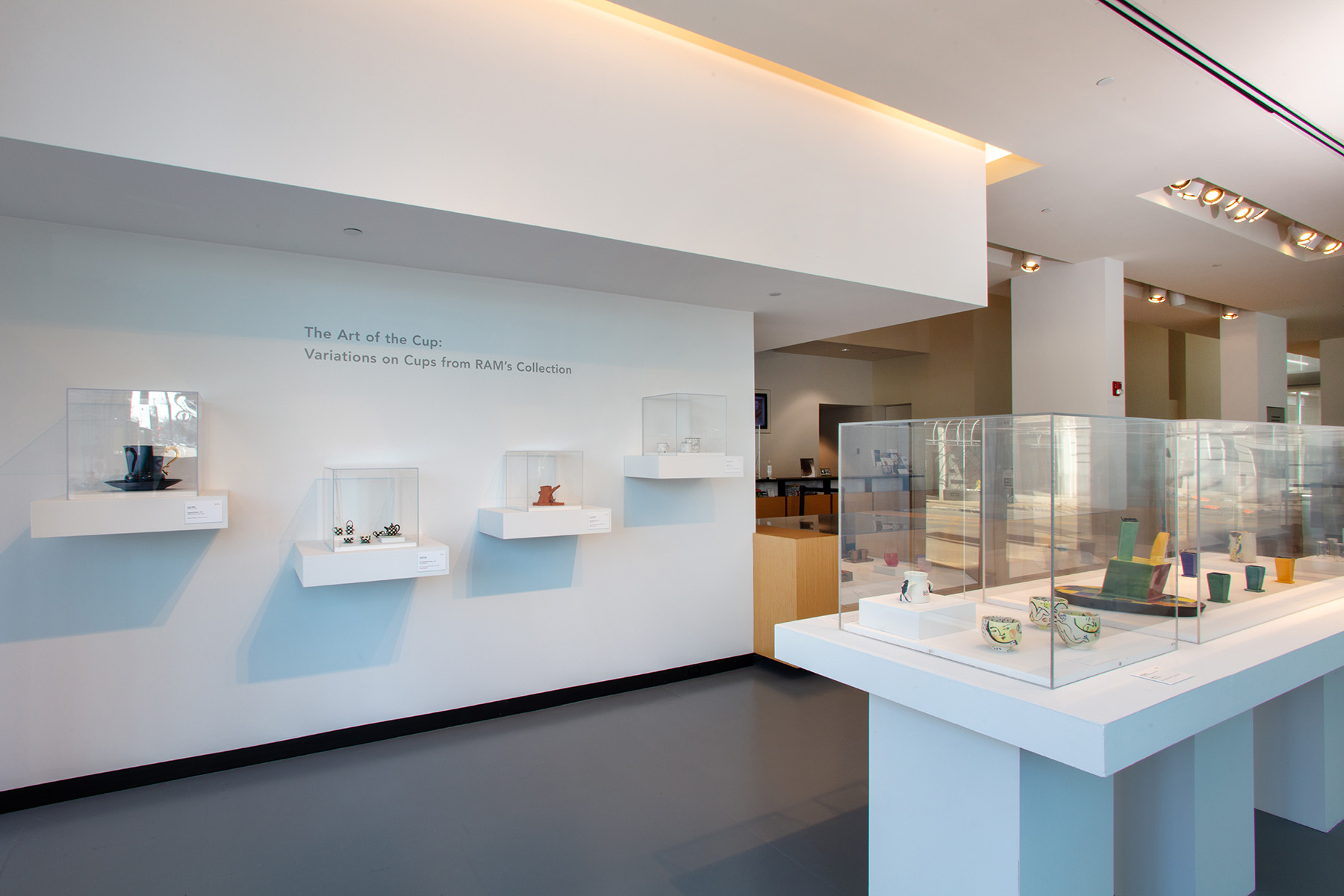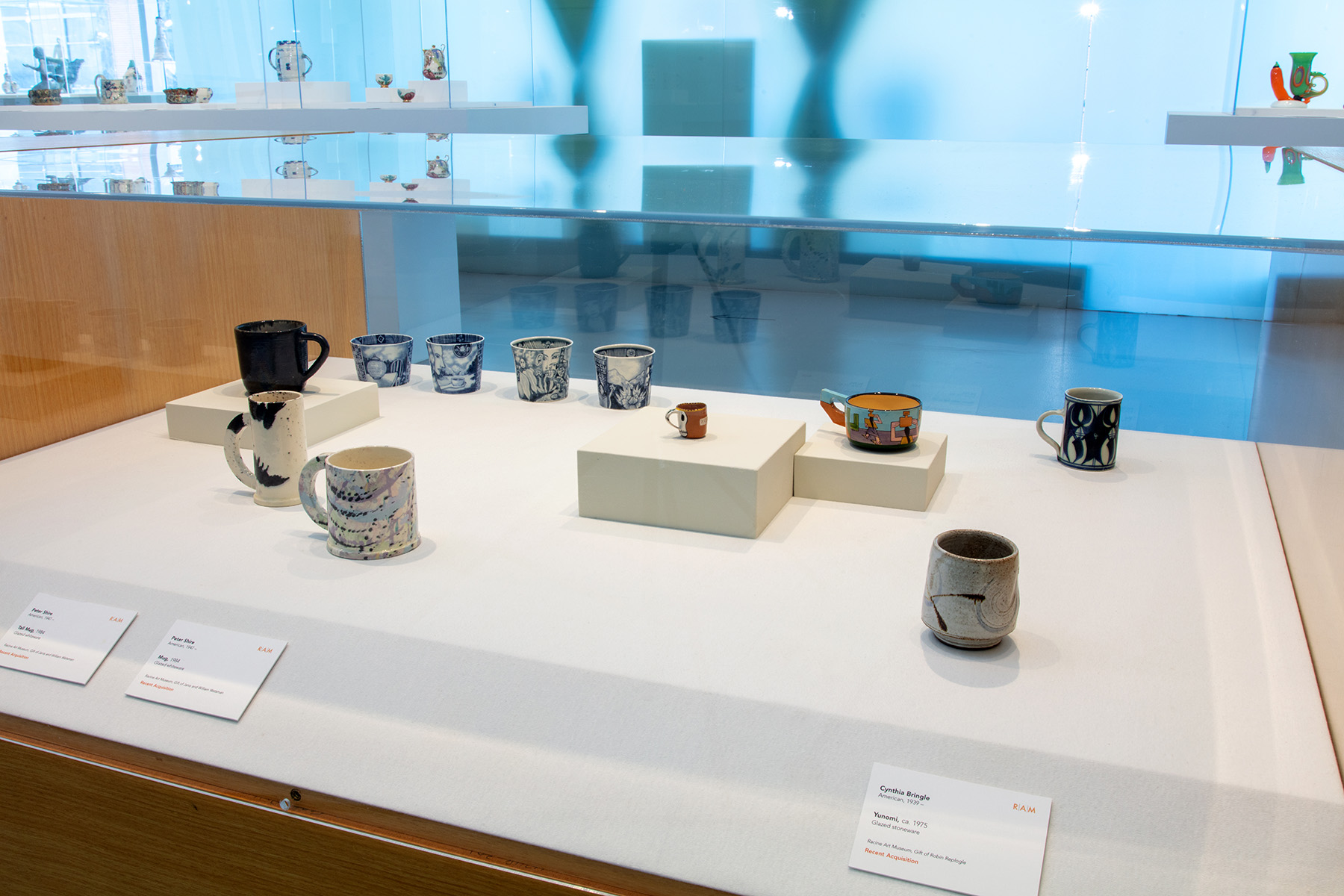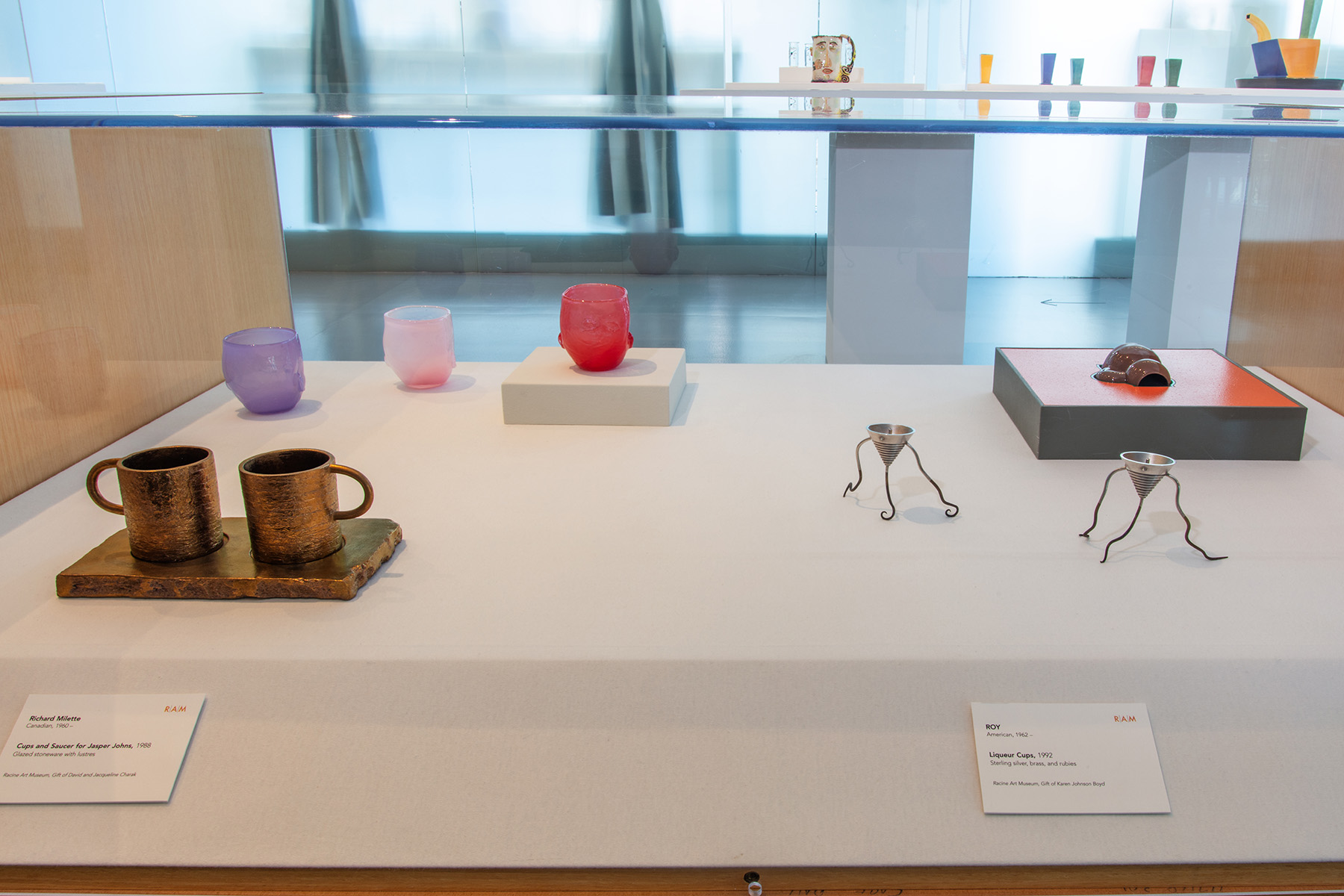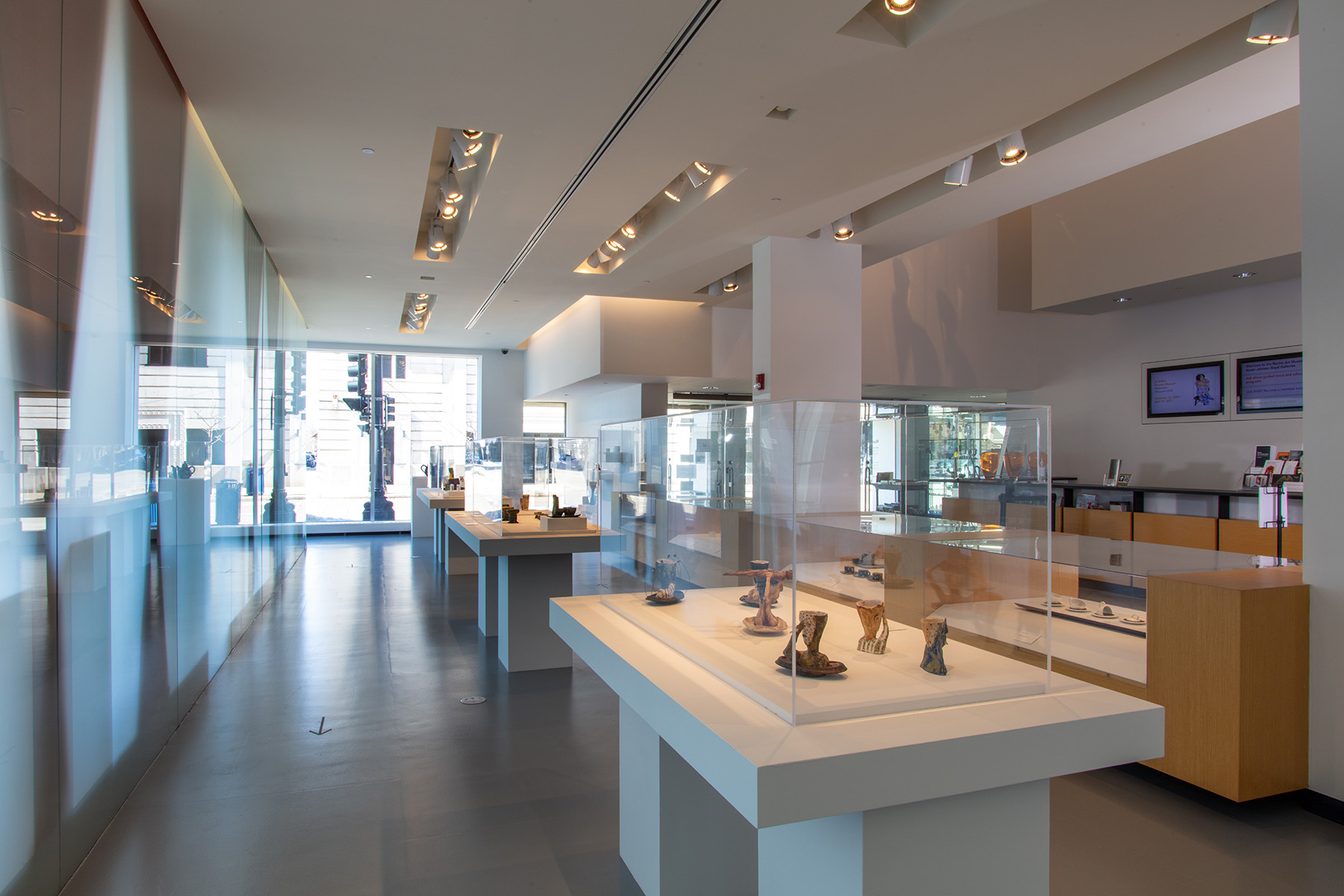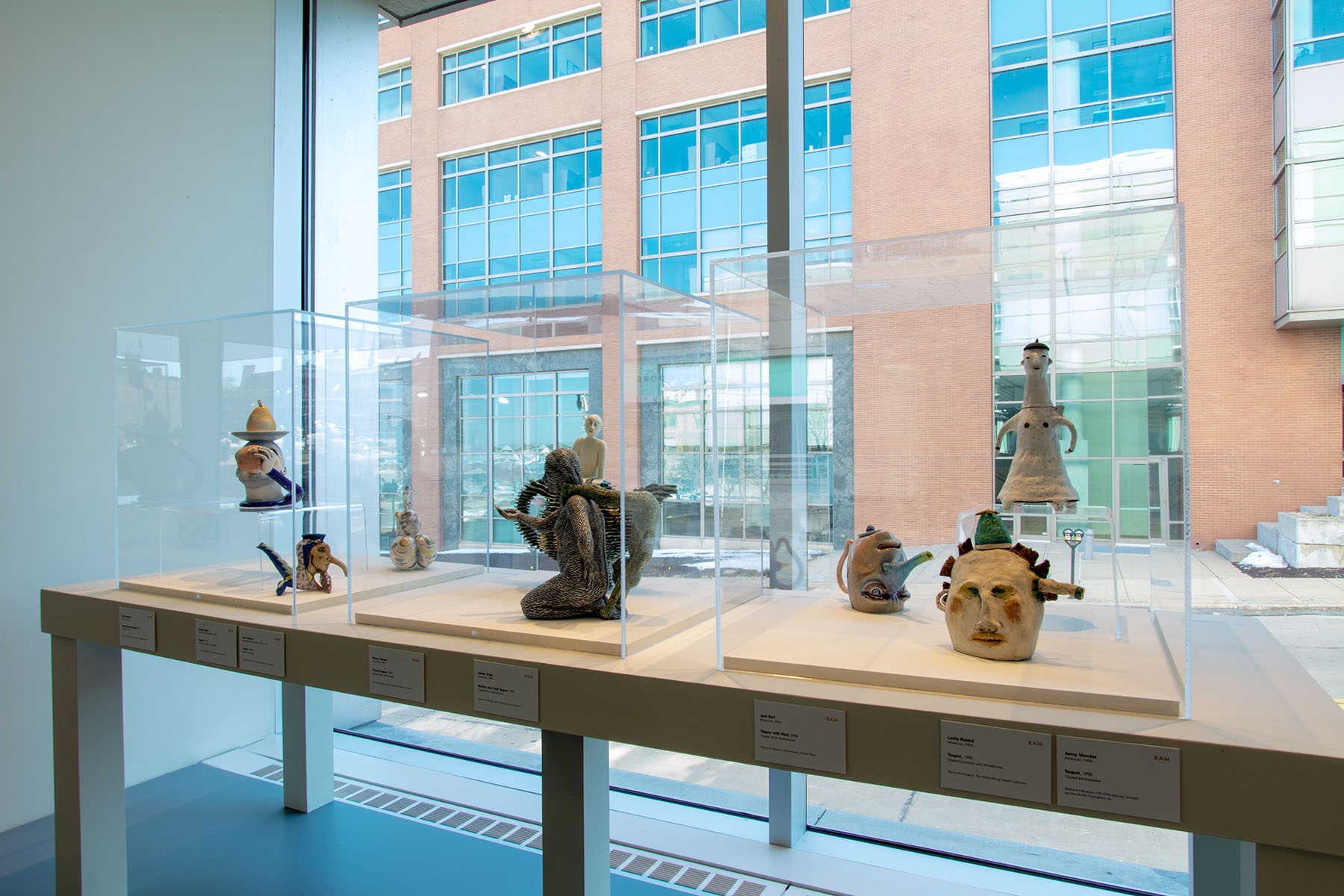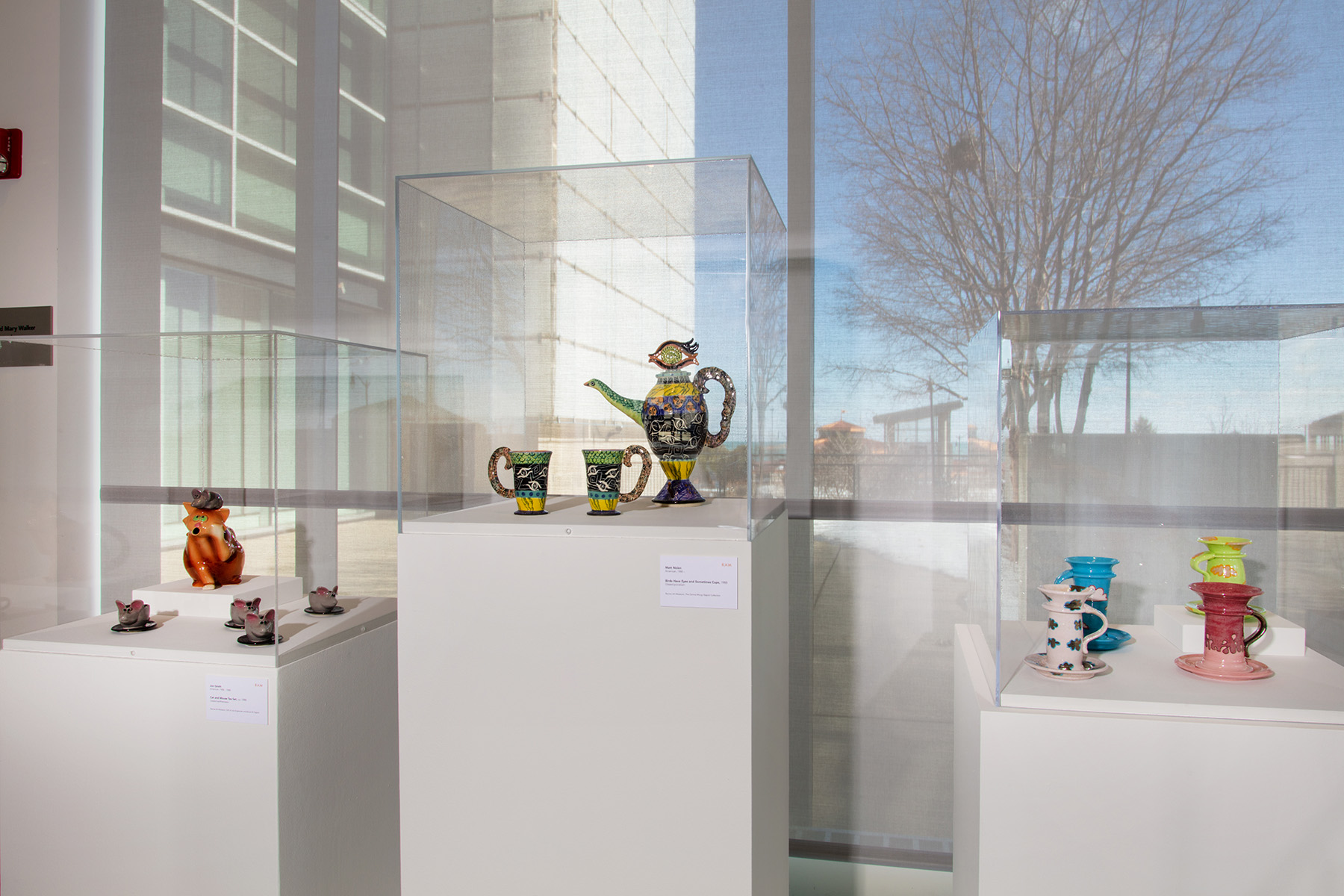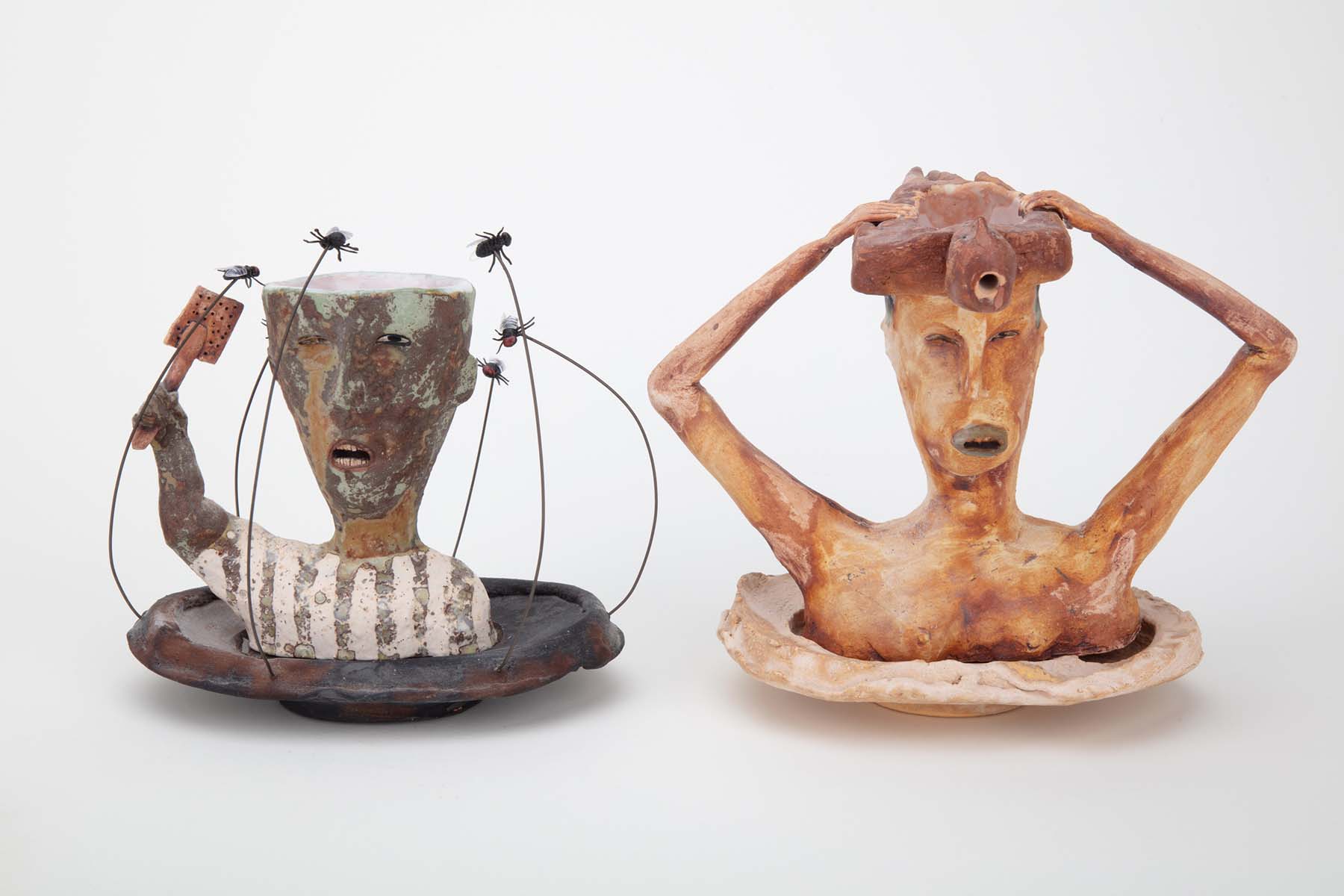
Wesley Anderegg
A Suite of Six Figurative Cups in Four Saucers (detail), ca. 1990
Glazed earthenware, wire, and plastic
Racine Art Museum, Gift of Gail M. and Robert A. Brown
Photography: Jon Bolton
The Art of the Cup: Variations on Cups from RAM’s Collection
January 27 – August 7, 2021
at Racine Art Museum
Disposable plastic cups notwithstanding, a cup has historically been defined as a bowl-shaped vessel for drinking, usually outfitted with a handle. While a cup can have social or cultural functions beyond use, such as a trophy or a vessel used within religious ceremonies, its primary historical role has been functional—as a container of liquid. Cups, made of a variety of materials, have been unearthed in archaeological digs throughout the world.
Unlike the teapot, whose functionality and meaning has been challenged or reframed repeatedly, the cup has not been the source of as many philosophical investigations within the field of contemporary craft. This does not mean it has been marginalized or avoided. In fact, handmade cups are ever popular as serving ware and the cup as a subject continues to be an organizing theme for numerous exhibitions in galleries and museums.
Contemporary makers, balancing the traditions of the past with those of the present, create cups that reflect their style and their interests. Drawn from RAM’s collection, this exhibition—with works made of clay, glass, and metal—features contemporary iterations of cup forms, sometimes as multiples within a set. Mugs and goblets are included to offer contrasts and comparisons. There are also examples by those who play with the idea of a cup as a symbolic or metaphoric vessel.
More About the Exhibition
Artists in the Exhibition
Wesley Anderegg, Robert Arneson, Karl F. Borgeson, Cynthia Bringle, Karen Buhler, Alan Caiger-Smith, Nadeige Choplet, Oliver Doriss, Jack Earl, Lea Embree, Willem Gebben, Katherine Gray, Erik Gronborg, Jon Groth, Melanie Guernsey-Leppla, Dorothy Hafner, Steven Hill, Martha A. Holt, Margaret Ponce Israel, Geo Lastomirsky, Leach Pottery, Zachery Lechtenberg, Robert Levin, Paul Mathieu, Richard Milette, Ron Nagle, Matt Nolen, Donovan Palmquist, Ken Price, Douglass Rankin, ROY, Will Ruggles, Judith Salomon, Michael J. Schunke, Yoko Sekino-Bové, Andy Shaw, Peter Shire, Anna Silver, Judith Strong, Toshiko Takaezu, Akio Takamori, Rosalyn Tyge, Kurt Wallstab, Patti Warashina, Kurt Weiser, John Whitney, and Irina Zaytceva
The Art of the Cup: Variations on Cups from RAM’s Collection
January 27 – August 7, 2021
at Racine Art Museum

Wesley Anderegg
A Suite of Six Figurative Cups in Four Saucers (detail), ca. 1990
Glazed earthenware, wire, and plastic
Racine Art Museum, Gift of Gail M. and Robert A. Brown
Photography: Jon Bolton
Disposable plastic cups notwithstanding, a cup has historically been defined as a bowl-shaped vessel for drinking, usually outfitted with a handle. While a cup can have social or cultural functions beyond use, such as a trophy or a vessel used within religious ceremonies, its primary historical role has been functional—as a container of liquid. Cups, made of a variety of materials, have been unearthed in archaeological digs throughout the world.
Unlike the teapot, whose functionality and meaning has been challenged or reframed repeatedly, the cup has not been the source of as many philosophical investigations within the field of contemporary craft. This does not mean it has been marginalized or avoided. In fact, handmade cups are ever popular as serving ware and the cup as a subject continues to be an organizing theme for numerous exhibitions in galleries and museums.
Contemporary makers, balancing the traditions of the past with those of the present, create cups that reflect their style and their interests. Drawn from RAM’s collection, this exhibition—with works made of clay, glass, and metal—features contemporary iterations of cup forms, sometimes as multiples within a set. Mugs and goblets are included to offer contrasts and comparisons. There are also examples by those who play with the idea of a cup as a symbolic or metaphoric vessel.
More About the Exhibition
Artists in the Exhibition
Wesley Anderegg, Robert Arneson, Karl F. Borgeson, Cynthia Bringle, Karen Buhler, Alan Caiger-Smith, Nadeige Choplet, Oliver Doriss, Jack Earl, Lea Embree, Willem Gebben, Katherine Gray, Erik Gronborg, Jon Groth, Melanie Guernsey-Leppla, Dorothy Hafner, Steven Hill, Martha A. Holt, Margaret Ponce Israel, Geo Lastomirsky, Leach Pottery, Zachery Lechtenberg, Robert Levin, Paul Mathieu, Richard Milette, Ron Nagle, Matt Nolen, Donovan Palmquist, Ken Price, Douglass Rankin, ROY, Will Ruggles, Judith Salomon, Michael J. Schunke, Yoko Sekino-Bové, Andy Shaw, Peter Shire, Anna Silver, Judith Strong, Toshiko Takaezu, Akio Takamori, Rosalyn Tyge, Kurt Wallstab, Patti Warashina, Kurt Weiser, John Whitney, and Irina Zaytceva
Sample of Work in the Exhibition
Click/tap an image for more information
Installation View
Exhibitions at RAM are made possible by:
Platinum Partners
The Estate of Karen Johnson Boyd
David Charak
Judith and David Flegel Fund
Ron and Judith Isaacs


Windgate Foundation
Diamond Partners
Ruffo Family Foundation
Ruth Foundation for the Arts
Diane Zebell
Gold Partners
Anonymous
A.C. Buhler Family
Robert E. Kohler Jr. Fund
Osborne and Scekic Family Foundation
Reliance Controls
Trio Foundation of St. Louis
W.T. Walker Group, Inc.
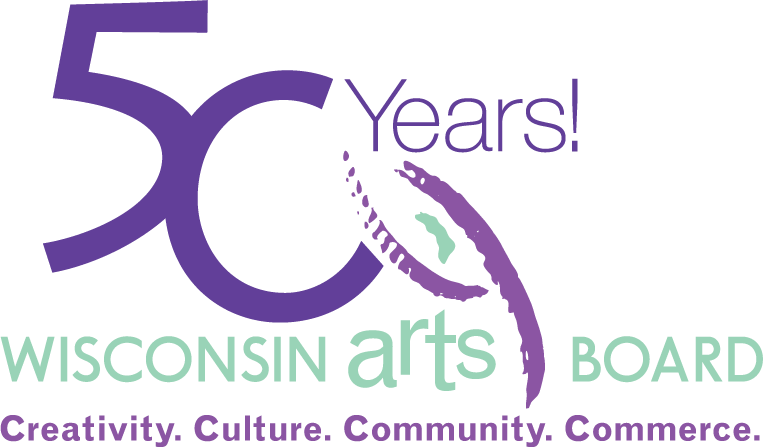
Silver Partners
Anonymous
Baird
Lucy G. Feller
Ben and Dawn Flegel
Sharon and Tom Harty
Dave and Judy Hecker
Paula Kalke
Horizon Retail Construction, Inc.
Johnson Financial Group
Lang Family Foundation
Dorothy MacVicar
Jan Serr & John Shannon
Sandra Shove
Willard and Mary Walker
Bronze Partners
Sandy and Gus Antonneau
Carol Baylon
Rose and Peter Christensen
Dave’s Wine Garage
Educators Credit Union
Patricia and Richard Ehlert
Express Employment Professionals
Deborah Ganaway
Carol Griseto
Hitter’s Baseball
Bill and Debbie Keland
Nancy and Nick Kurten
Susan Manalli
Norbell Foundation
JoAnna Poehlmann
Rasmussen Diamonds
SC Johnson
Harold and Lois Solberg
Kathy Stranghellini
Tito’s
Twin Disc
Janna Waldeck
Barbara Waldman
Marc J. Wollman
Stay in Touch
The Racine Art Museum and RAM’s Wustum Museum work together to serve as a community resource, with spaces for discovery, creation, and connection. Keep up to date on everything happening at both museum campuses—and beyond—by subscribing to our email newsletter:


